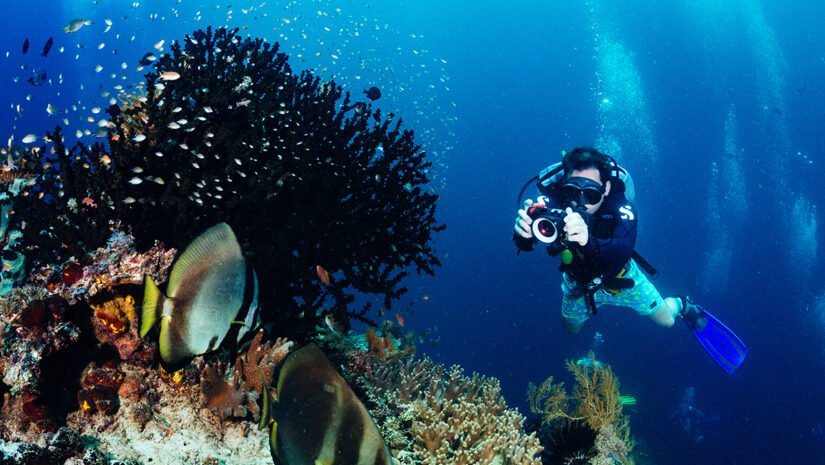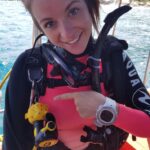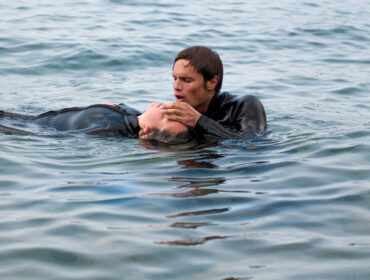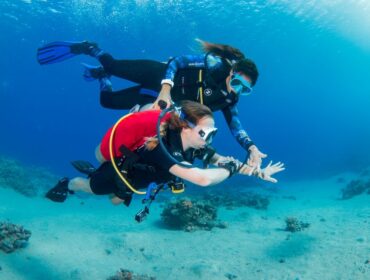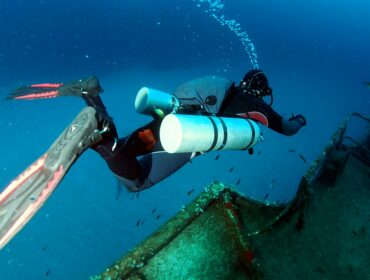Breathing on land feels effortless, but underwater, it’s a different story. As you descend, pressure increases, changing how gases behave in your body. At 30 meters deep, you’ll breathe four times more air than you do at the surface, and your lungs work harder to process each breath. This added effort can lead to carbon dioxide (CO₂) buildup, affecting how you feel and perform. That’s why understanding gas laws, your body’s response to pressure, and smart breathing techniques isn’t just theory – it’s essential for safe, efficient diving.
In this article, we’ll break down the science of breathing underwater, covering the key gas laws, how pressure affects your body, and the best techniques to stay calm, efficient, and safe below the surface. Whether you’re a new diver or simply curious about the magic behind the mask, this guide will help you understand why mastering your breath is one of the most powerful skills a diver can develop.
How Gas Laws Affect Scuba Diving
Scuba diving turns everyday air into something far more complex. The deeper you go, the more pressure changes how gases behave inside your body and your tank. Three key gas laws explain why:
- Boyle’s Law – As pressure increases, gas volume decreases. At 10 meters, pressure doubles, and your lungs compress unless you breathe to equalize them. This also means a full tank doesn’t last as long at depth.
- Dalton’s Law – The total pressure of a gas mix equals the sum of its parts. When diving with air, oxygen, and nitrogen, each makes up part of the total pressure. At greater depths, each gas becomes more concentrated, which raises risks like nitrogen narcosis and oxygen toxicity.
- Henry’s Law – More gas dissolves in your blood under higher pressure. This is why divers must ascend slowly and allow excess nitrogen to leave the body safely. Skip this, and you risk decompression sickness (the bends).
Understanding these gas laws isn’t just for theory in the textbooks. It helps you breathe smarter, plan safer dives, and manage air more efficiently at every depth.
The Physiology of Breathing Under Pressure
Your lungs weren’t designed to breathe dense, compressed gas, but that’s exactly what they do underwater. As you descend, water pressure increases and the air you breathe becomes thicker. That’s where your scuba regulator comes in. It adjusts the air from your tank to match the surrounding pressure, making it possible to breathe normally at any depth.
Even so, breathing takes more effort the deeper you go. Each breath contains more molecules, and your lungs must work harder to move that dense gas. If you don’t exhale fully or start to breathe too fast, CO₂ can build up in your body.
This buildup is called hypercapnia and can lead to dizziness, headaches, confusion, or, in severe cases, unconsciousness. It’s a hidden danger, especially when divers are cold, stressed, or overexerted.
Good equipment helps, but breathing technique matters too. Deep, steady breaths help remove CO₂ and reduce strain, keeping your system balanced under pressure.
Mastering Breathing Techniques for Scuba Diving
Breathing well underwater is not only a comfort. It’s a skill that can extend your dive time, improve buoyancy, and help prevent CO₂ buildup. Controlled breathing reduces stress and helps your body adapt to changes in pressure more efficiently.
One of the most effective methods is diaphragmatic breathing, also known as belly breathing. It draws air deep into your lungs, allowing for better gas exchange and more complete removal of carbon dioxide. In contrast, shallow chest breathing tends to trap stale air, which can leave you feeling tired or short of breath.
A useful rhythm for many divers is to inhale for 4 seconds and exhale for 6. That longer exhale not only promotes relaxation but also helps control buoyancy by reducing sudden shifts in lung volume. Your lungs are one of the most responsive buoyancy tools you have – more subtle than your BCD and much faster to adjust.
You’ll feel the difference with practice. Divers who train this way often report:
- Longer dive times, thanks to improved air efficiency
- Smoother buoyancy, with less finning or fidgeting
- Better control in stressful moments, like low visibility or a mask flood
Our breath is the most powerful tool for comfort, control, and confidence beneath the surface.
Equipment and Environmental Considerations
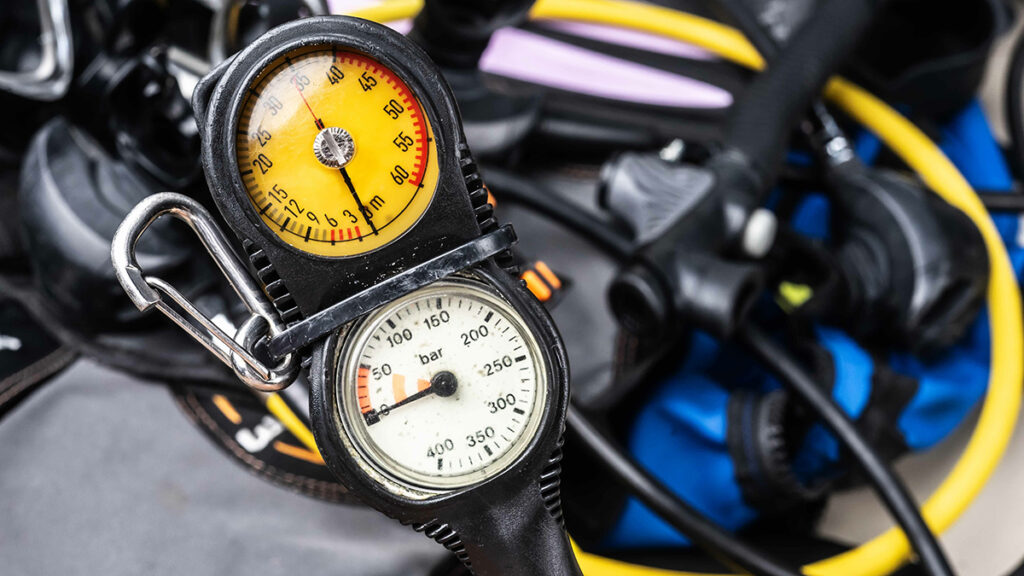
Even with perfect technique, the way you breathe underwater is shaped by your gear and the environment you’re diving in.
Your scuba regulator plays a vital role in breathing comfort. It reduces the high-pressure air from your tank to ambient pressure so that you can inhale naturally at any depth. A high-quality, well-maintained regulator delivers air smoothly with minimal resistance. In contrast, a poorly tuned or entry-level regulator may feel stiff or “tight,” especially in cold water or at depth, making breathing harder than it should be.
Cold water diving adds another challenge. Colder temperatures can increase gas density and reduce airflow efficiency. In extreme conditions, regulators may even free-flow or become harder to draw air from. Choosing a regulator rated for cold water is essential for safety and performance.
Environmental factors like strong currents, poor visibility, or surge can also increase your breathing rate by raising your workload and stress levels. These situations require physical effort and mental focus. Both of these demand more oxygen and can lead to quicker CO₂ buildup if not managed with steady, deliberate breathing.
Follow these three key tips to reduce your chances of CO₂ buildup:
- Choose a regulator designed for your dive environment (e.g., cold, deep, or technical diving)
- Maintain your gear regularly to ensure smooth airflow
- Plan dives that match your fitness and comfort level—lower stress means better breathing control
When your equipment supports your breathing and your environment doesn’t force you into overdrive, your dives become smoother, safer, and more enjoyable!
Practical Training Tips to Improve Underwater Breathing

Like any skill, efficient breathing improves with practice. Whether you’re a new diver or looking to fine-tune your air consumption, consistent training both on land and in water can build the awareness and control you need.
Start with Dryland Breathing Drills
Practicing slow, controlled breathing at home helps develop muscle memory and strengthens your diaphragm. Try this simple exercise:
- Sit or lie down comfortably
- Inhale through your nose for 4 seconds
- Hold for 2 seconds
- Exhale slowly through your mouth for 6–8 seconds
- Repeat for 5–10 minutes a day
This kind of breath training is common in yoga, freediving, and meditation. It boosts your CO₂ tolerance and conditions your body to stay relaxed under pressure, quite literally.
Use Pool Time Wisely
Don’t just practice buoyancy. Focus on breath control during skills sessions or fun dives in the pool. Use slow fin kicks, hover without using your BCD, and match your breathing rhythm to your movements.
Train Your Brain as Well as Your Lungs
Mental rehearsal and visualization are powerful tools. Picture yourself responding calmly to a stressful moment, such as a free-flowing reg or lost mask, while keeping your breath smooth and steady. This kind of mental prep helps you stay composed in real scenarios.
Dive Planning Matters Too
Through better planning, you can reduce the workload on dives by avoiding strong currents or heavy exertion and making sure that you are wearing the right exposure protection for the environment. Remember to maintain neutral buoyancy to help minimize unnecessary movement.
In scuba diving, breath is more than life support – it’s a tool for safety, control, and confidence. Understanding how gas laws work helps you anticipate how your body will respond at depth. Developing smart breathing techniques protects you from CO₂ buildup and improves your efficiency. And training your breath, wherever you may be, can transform the way you dive.
When you stay calm and breathe with intention, you’re not just using less air. You’re managing your buoyancy more precisely. And reacting more clearly in emergencies. You’re unlocking the kind of control that makes diving feel effortless.
So whether you’re prepping for your next training dive or planning a trip to deeper waters, remember: your breath is your edge. It’s worth knowing how to master it.
Learn to breathe like a pro – explore our training tips and gear for better underwater breathing

